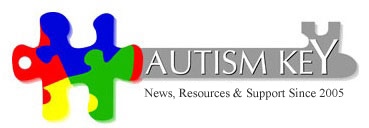Conduct Disorder vs. Autism: Identifying the Differences
A persistent and pervasive problem within school systems is the conflating of conduct disorder with autism. Research has shown that while individuals with conduct disorder have problems with social interaction and the perceptions of others, their problems are considered to arise from abnormal social learning, rather than the intrinsic developmental difficulties of Asperger’s Syndrome (AS) and other autism spectrum disorders (ASDs).
Those with Asperger’s are significantly more impaired than the conduct disordered group in terms of their threshold for annoyance, perception of their own role within a conflict and their ability to withstand teasing. They tend to value a friend in terms of what that person did not
do such as, “he’s my friend because he doesn’t laugh at me.”
While the level of overall symptomatology is equal between the groups, AS individuals have more inwardly directed problems such as sleep disorders, obsessions and compulsions.
Unlike the conduct disordered group, they are seldom prone to outward expressions of their problems through stealing, drugs and alcohol.
Individuals with Asperger’s are frequently misdiagnosed as conduct disordered and even when they are properly diagnosed, they are still labeled “behavior problems” and treated as such. Conduct disordered kids are given a strict system of rewards and punishments to modify their behavior.
Often it is laid out that if they commit a certain act, they will experience “natural consequences” for it. “Natural consequence” is code for “naturally, you will be punished.”
Asperger’s Syndrome expert Dr. Tony Attwood has made it abundantly clear what parents of AS children already know – punishing them does not work. When they are upset, remaining calm and giving them space is the best option.
To modify their behavior, appeal to their logical reasoning, which is their personal compass in life.
Because they are so intelligent, they loathe being patronized or having to follow rules they deem illogical. Soundly make your case, and they will be won over.
Shaming them before their peers, punishing their outbursts, getting caught up in contest of wills or making them “talk it out” when they are already provoked are all recipes for disaster. The adult approaching an Asperger’s child in this way will only be inflaming the situation, then pointing to their meltdowns as evidence that they are conduct disturbed.
That’s why it’s so important for parents to work with schools to identify the child’s triggers and come up with a “toolbox” of coping strategies.
Sometimes, having a tent in the corner of a classroom for the child to retreat to with a favorite toy or book is useful. An iPod to provide soothing music can be written into an IEP. Stepping outside for a breath of fresh air works wonders. Tony Attwood suggested making a “Pleasures Book” (a scrapbook of things that make your child happy) to take out when they need comfort.
This topic is on my mind now because of my son. Last year, he had a wonderful teacher in middle school who knew to shift his attention when he got upset and provided soothing choices for him to de-escalate.
He actually became self regulating, and went months without a meltdown. But this year, he’s hit a wall in high school – all his progress has been obliterated by a behaviorist teacher who knows nothing about Asperger’s or ASD.
I was so upset about his regression that I even called a member of the school board who replied to my tirade with campaign platitudes like, “I care about special education” and “our school district values inclusion.” When I told him the special ed teachers don’t know anything about autism he grew indignant and replied, “but that takes money!”
Autism Awareness Month begins in one week and it’s my desire for those in our school systems to use that time to further educate themselves about autism spectrum disorders. Awareness and education are the only ways to combat the ignorance that currently exists in our schools and greater awareness will go a long way in helping educators understand and differentiate autism from similar, yet unrelated conditions.

